1. Natural succession
The Grünewald forest is able to regenerate itself, in the way that the surfaces deforested by beetles or wind throw are no natural disaster but a basis to start a new natural development. If the soil is not chemically treated and if you allow full bent to nature, perfectly adapted vegetation can grow and spread, faster and stronger than all competitive plants all by engendering a healthy habitat.
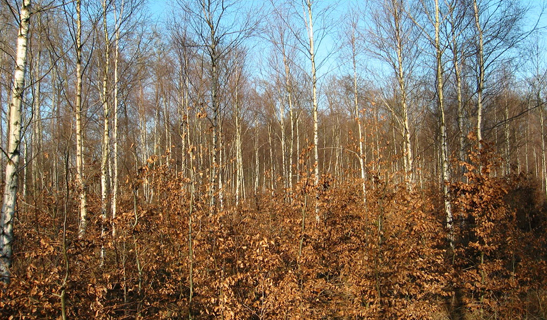
Succession surface with birches and natural regeneration of beeches
On the nude surfaces first graminae, herbs and bracken grows. Later on pioneer bushes like for example gorse, blackberry or buckthorn begin to cover the ground, followed by pioneer trees like birch, aspen, rowan berry and different kinds of willow.
A primary forest is always formed by these species and can be managed according to forestry criteria. Such a primary forest has a positive influence on the improvement of the soil and the microclimate for a later beech grove. It is only at the final status of this development that the final forest type best adapted to this situation is installed, most often a combination of beeches with oaks and hornbeams.
2. Planting
Even if the natural regeneration plays a very important role in the regeneration process of the Grünewald, it can be possible that some new surfaces are artificially planted, namely after agricultural deforestation, ice and snow damage or fire damage. But it can also be necessary after a previous wrongly adapted or insufficient tree combination.
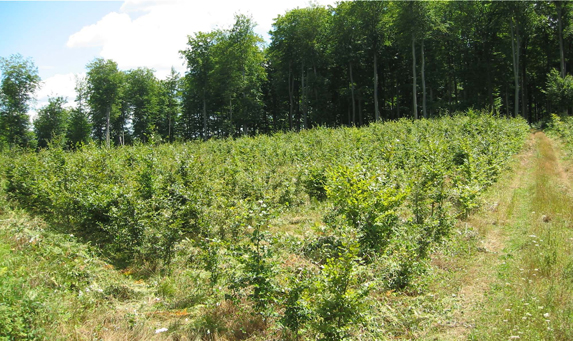 Reforestation with beeches |
|
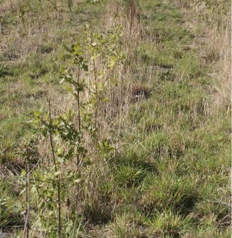 Reforestation with oaks |
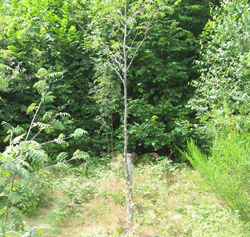 Planting of a mountain ash |
The plants that are set manually or mechanically come all from similar geographical situations and climates, corresponding to the new habitat.
The criteria of the decisions taken in this process are based upon the data given by the National Administration of Waters and Forests and in respect of the eventual future forestry management.
3. The natural regeneration
The near-natural forestry management in the Grünewald is taking a maximum advantage of the natural evolution in the forest. The wood is regenerating itself naturally all by engendering the new seedlings. Profit is being taken out of those naturally born seedlings (for example beech-nuts), growing under the protection of the high stemmed trees, in order to generate a new-born forest.
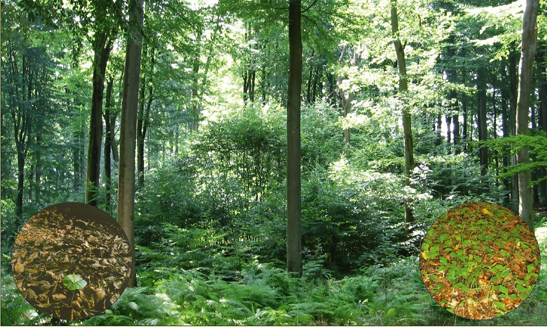
Natural regeneration of a beech grove
This natural kind of forest regeneration is the most used one in the Grünewald. It is developing all by itself if all the necessary conditions (light, soil) are preserved and if the game occurrence is kept rather low.
The natural forest regeneration is not only the best way to survive for a forest but offers also good economical advantages:
- undisturbed growing up from the beginning with no root reducing (no planting shock)
- less game damage than in artificially planted areas
- less hail and dryness damage than on open spaces, because of the protection by the old trees
- no extra costs for plants and plantings
- continuity of the microclimate and its water resources
- Conservation of the genetic resources, adapted to the habitat
